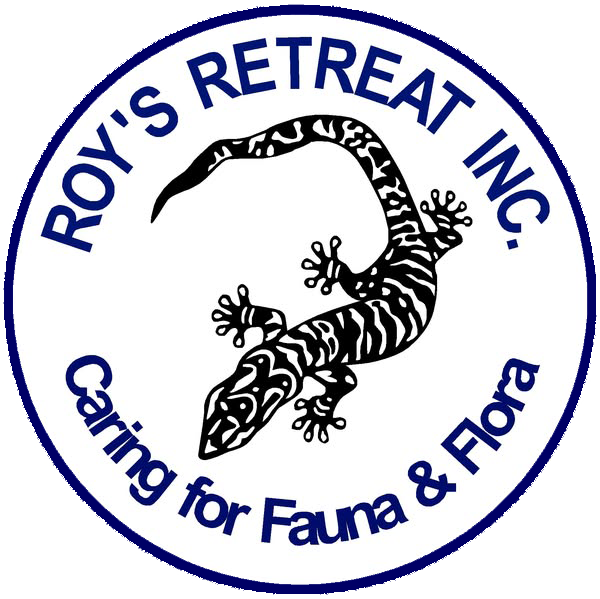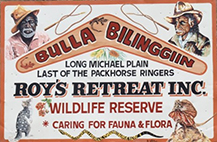The History of Roy’s Retreat
Roy Walker arrived in the Kimberley region in the early 1940s, bringing with him a wealth of experience gained from years of working on stations as a stockman, yard builder, and saddler. He spent much of his career as a head stockman for the Durack family and other pioneering families, working on some of the largest sheep stations in the world.
Roy’s journey in the Kimberley also saw him work as a lay missionary at Kalumburu mission for Father Seraphin Sanz. During this time, he learned a great deal about the introduction of new grasses to the region, an area of interest that would later inform his work in land management and conservation.
Forty years ago, Roy returned to the Long Michael Plain, a place he had mustered in his youth while working for the Duracks. This land, which had been the tribal domain of the Miriwong people, was given to Roy by Bulla Bilinggiin, the headman of the Miriwong tribe. The purpose of this land grant was to allow The History of Roy's Retreat
Roy to train Bulla’s children in stock work. The Long Michael Plain would become the heart of Roy’s future endeavours.
Roy established a Stock and Station Training Centre on the land, where both Aboriginal and white children came to learn skills for working on stations. The training programs lasted eight weeks, and the goal was to help these young people find employment on nearby stations. Despite not receiving government funding, Roy financed the program himself, using his pension, selling poetry tapes, and making and selling leather belts. Despite the lack of official support, the program flourished, and Roy’s work attracted support from influential figures like Mary Durack, who served on his committee. Mary and her husband, Reg Durack, were frequent visitors to Roy’s Retreat, deeply interested in the work Roy was doing to help Aboriginal children.
Roy’s project garnered significant media attention, appearing in several newspapers and on television programs, including broadcasts on VOX Channel in Germany, which aired across Europe. The project’s success was further bolstered by the support of figures like David Warnock, the regional manager for the Water Authority. Warnock frequently visited Roy’s Retreat, organizing tours for visitors and contributing financially to the cause. He also brought children from the Water Authority and CALM (now the Department of Biodiversity, Conservation and Attractions) on weekends, giving them the opportunity to learn about land management, bores, pumps, and conservation. Roy’s program was one of the few that successfully integrated practical training with discipline and land stewardship.
However, after David Warnock left Kununurra, the program began to face difficulties. As corruption took root in Kununurra, the initiative was moved into the town, where it quickly lost its effectiveness. The original vision of teaching young people in a more controlled, rural environment faded. Roy’s Retreat, which had worked with some of the most challenging cases, including troubled youth from Longmore Prison in Perth, was the only program that showed promise.
With the help of the young trainees, Roy built a camp at the junction of Spillway and Stonewall Creeks. To formalize the operation, a lease agreement was established with the Water Corporation in 1997, transferring the lease to the Waters & Rivers Commission (now the Department of Environment). A major setback occurred in 1995 when a fire destroyed the original campsite. A new homestead was constructed on higher ground, closer to a range. However, the old campsite was washed away during two significant floods, and today, Spillway Creek is a dangerous river when it is running.
Roy had received permission from the Department of Lands and Agriculture (DOLA) to run horses and cattle on the Long Michael Plain, a permit that was confirmed by a survey conducted around 1989. Several government departments, including Aboriginal Affairs, signed off on this survey. Unfortunately, after the departure of George Geste, the regional manager of the Land Department, the progress of the land’s development stalled. Despite repeated efforts to retrieve the survey documents, they seemed to be mislaid, and the government departments could not locate them.
Roy’s Retreat once had copies of all relevant documentation, including the survey, but much of it was lost in the fire in 1995. George Geste, in correspondence, confirmed that the survey measurements had been taken but could not recall the specifics due to the passage of time. Roy and his wife Barbara had seen survey markers on the Long Michael Plain in the mid-1990s, but those markers were destroyed in subsequent fires. Nonetheless, the fences erected following the survey have remained in place, as they were intended to protect the stock and wildlife and to support the training program.

